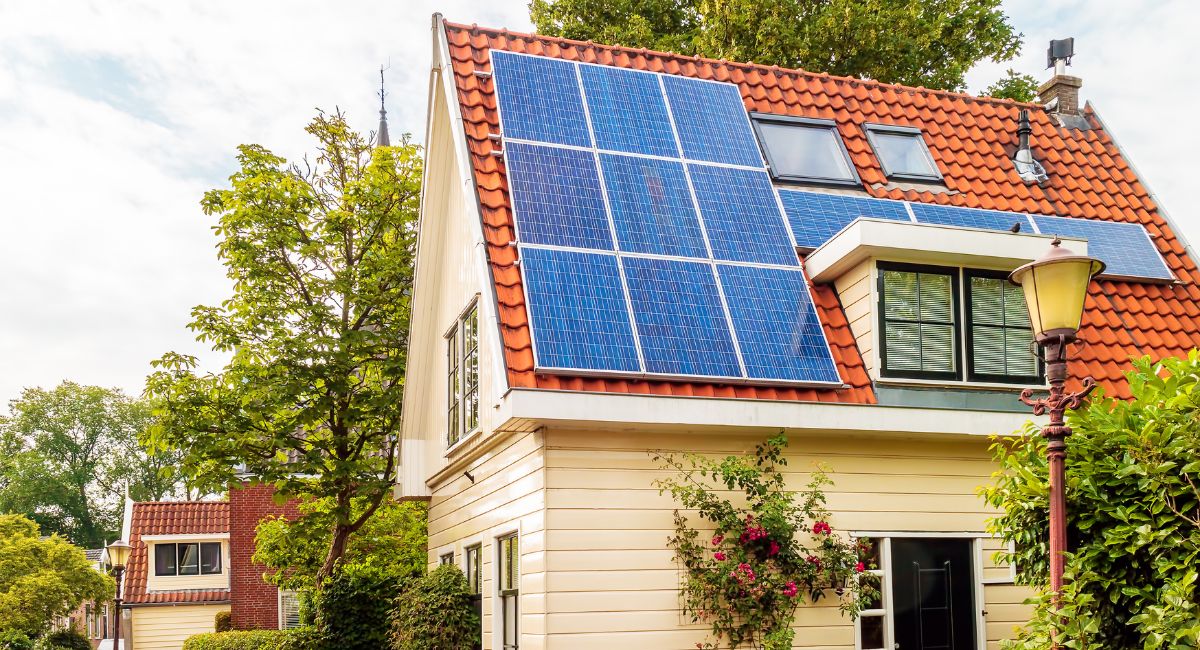1-888-976-5443 | M-F 9am-5pm AZ MST
support@outboundpower.com
1-888-976-5443
M-F 9am-5pm AZ MST
support@outboundpower.com
1-888-976-5443 | M-F 9am-5pm AZ MST
support@outboundpower.com
1-888-976-5443
M-F 9am-5pm AZ MST
support@outboundpower.com

The federal solar tax credit, also known as the Investment Tax Credit (ITC), is a significant incentive for homeowners in the United States to invest in solar energy systems. The tax credit reduces the cost of installing a solar energy system between 2022 and 2032. Homeowners may receive up to 30% of the total cost. That will decrease to 26% for systems installed in 2033 and 22% for systems installed in 2034. There is no maximum amount that can be claimed.
In this blog post, we will describe in detail how a homeowner can claim the federal solar tax credit as described in the 2022 Inflation Reduction Act.
The federal solar tax credit is a financial incentive provided by the U.S. government to encourage the use of solar energy. It allows homeowners and businesses to deduct a portion of the cost of installing a solar energy system from their federal income taxes. The credit was first established in 2006 and has since been extended multiple times.
According to the 2022 Inflation Reduction Act, the solar tax credit is available to homeowners who install qualified solar energy systems in their primary or secondary residences between January 1, 2022, and December 31, 2024.
Before claiming the solar tax credit, you must ensure that you are eligible to claim it.

According to the Department of Energy website, the following expenses are included:
To claim the federal solar tax credit, you must first install a qualifying solar energy system. Qualifying systems include solar panels, solar water heaters, and fuel cells that use renewable resources to generate electricity or heat. The system must be new and placed in service by the end of the tax year.
You should determine the total cost of the qualifying solar energy system. This includes the cost of the equipment, installation, and other related expenses. The cost of the solar energy system must be reported on IRS Form 5695.
To claim the federal solar tax credit, you should complete IRS Form 5695, Residential Energy Credits, and attach it to your tax return. Once you've completed Form 5695 you will need to include the credit amount on your Form 1040 or 1040-SR.
The solar tax credit is a non-refundable credit, which means that if your credit exceeds your tax liability, you won't receive a refund for the excess amount.
However, you can carry over any unused portion of the credit to future tax years. For example, if your solar tax credit for 2022 is $2,600, but your tax liability is only $2,000, you can carry over the remaining $600 credit to the following tax year.
In addition to the federal solar tax credit, many states and localities offer their incentives to encourage solar energy system installations. You should research the incentives available in their area to take full advantage of the benefits of renewable energy.
Investing in solar energy not only reduces energy costs but also promotes sustainable energy practices that benefit the environment. The federal solar tax credit is a valuable incentive for homeowners in the United States to invest in solar energy systems. By following these four steps, homeowners can claim the tax credit as described in the 2022 Inflation Reduction Act.
DISCLAIMER
*Qualifying battery storage technology of 3kWh or more must be installed by a connection to a dwelling in the United States, lived in by the taxpayer. You should always consult your tax professional to determine your eligibility for the Residential Clean Energy Credit under Section 25D of the Internal Revenue Code given your individual situation. Outbound Power does not guarantee any tax credit based on our products, and any information we provide is for educational purposes only and should not be considered legal advice. It does not constitute professional tax advice or financial guidance. It should not be used as the only source of information when making purchasing decisions, investment decisions, tax decisions, or execution. Consult a tax professional to evaluate your eligibility. Effective date: Jan 1, 2023.